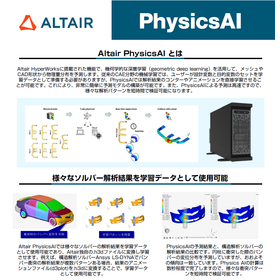Electromagnetic Field / EV-oriented Accurate Iron Loss Evaluation through Vector Magnetic Characteristic Analysis
The motor is essential in the era of EVs, but most of the energy loss in motors and transformers comes from iron losses. By reducing iron losses, we can improve fuel efficiency and achieve a lighter cooling mechanism due to reduced heat generation. Specifically, we can suppress the temperature rise associated with energy loss, making it possible to miniaturize the motor. It can also greatly contribute to material selection. Jupiter-E&S is positioned to complement traditional electromagnetic field analysis software and contributes to the high-efficiency design of motors. ############################################################################ For information on features and case studies, please refer to the product page in the related links. Feel free to contact us with any questions, no matter how trivial.
Inquire About This Product
basic information
■ Importing 2D CAD ■ Modeling ■ Vector magnetic characteristic analysis ■ Iron loss evaluation, etc. *As a method for accurately analyzing iron loss, there is the vector magnetic characteristic analysis devised by Professor Emeritus Enokizono of Oita University and others. There are few practical software applications for this method worldwide, and Mu-Tech was the first to commercialize it with "μ-E&S." Jupiter-E&S is a total system that incorporates this E&S into the Jupiter platform.*
Price information
Please feel free to contact us.
Delivery Time
P3
Applications/Examples of results
【Examples of Achievements】 - Used μ-E&S at JAXA's "Space Exploration Innovation Hub" (2019) - A certain automobile manufacturer (2014) - A certain motor manufacturer (2017) - National research institution (2017)
catalog(3)
Download All CatalogsNews about this product(1)
Company information
TechnoStar has been developing domestic CAE software for 20 years, receiving guidance from many customers. Our main software, "Jupiter," has expanded beyond structural analysis, vibration analysis, and acoustic analysis to include fluid analysis, electromagnetic field analysis, and mechanism analysis, making it usable across various industries. Moving forward, we will continue to develop CAE software that can adapt to changes in the times, in collaboration with our customers.


![Vector Magnetic Property Analysis Software 'Jupiter-E&S' [For Electromagnetic Fields and EVs]](https://image.mono.ipros.com/public/catalog/image/01/fda/550462/IPROS42590172424310203113.jpeg?w=120&h=170)
![General-purpose CAE preprocessor "Jupiter-Pre" [Creation of a mesh with 100 million nodes]](https://image.mono.ipros.com/public/catalog/image/01/bc5/568555/IPROS54191865311470200436.jpeg?w=120&h=170)
![General-purpose CAE post-processor "Jupiter-Post" [High-speed visualization and a variety of functions]](https://image.mono.ipros.com/public/catalog/image/01/04b/568556/IPROS85156645463262845170.jpeg?w=120&h=170)










